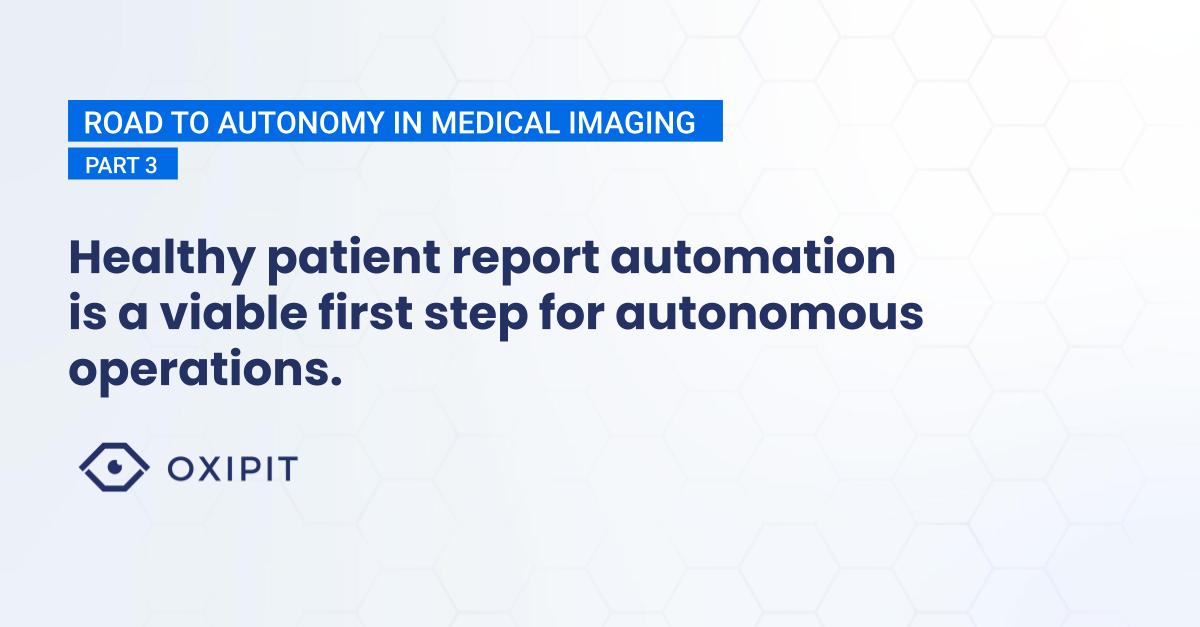
ChestLink, the first autonomous medical imaging application, produces automated reports for healthy patients – where the application is highly certain that the chest X-ray does not present any pathologies.
We are building this product upon vanguard ChestEye capabilities (75 pathologies), combined with specialist models to identify healthy no-findings chest X-rays.
While this focus might not look grand in company presentations (remember, ‘Not with a bang, but with a whisper‘), we have selected healthy patient report automation as a viable first step for autonomous operations.
- Chest X-rays are a ‘straightforward’ two-dimensional modality from radiological, as well as from technological perspective. It presents the area where AI can bring tangible results in improving patient care right now (as opposed to 10+x years down the road).
- The largest consensus between radiologists lies whether the patient is healthy. Radiologists are subjective. Even the most like-minded specialists tend to disagree. Our developments were aimed at addressing subjectivity bias.
- ChestLink operates autonomously only in the cases where application is highly certain that X-rays present no findings. Where it has medium confidence, the X-ray is presented for radiologist review. Although this significantly narrows the scope of autonomous operations, we feel it is the necessary step to advance the technology.
- ChestLink deployment is a multi-stage process with medical specialist oversight at every step. We begin the deployment with a retrospective mode, where we analyse the X-rays radiologists have already reported on. ChestLink then moves into a ‘shadow mode’, where it operates alongside the radiologist. Only then it can proceed into the autonomous mode* (* pending regulatory approval). This lengthy process helps to internalize the technology, adjust to the data of the medical institution, as well as to build the trust and understanding of how the application works.
These are only a few outtakes how we choose to proceed in the field of medical imaging autonomy.
Yet most importantly, we are developing this product in the European Union, with a high degree of regulatory oversight, focus on patient care and enough resources at pilot medical institutions to support the development, audit and supervision of autonomous operations.
We strongly feel that such an environment is the proper ethical domain to move autonomous medical imaging forward.
Only after ‘graduating’ from this scrutinous environment, we may bring a steadfast fully developed product to the regions where there is no access to medical imaging at all.
This is PART 3 of our post series exploring the road to medical imaging autonomy.
PART 2: AI Autonomy in Medical Imaging: Addressing Global Shortage of Radiologists
PART 1: AI Autonomy in Medical Imaging: Not with a Bang, but with a Whisper



